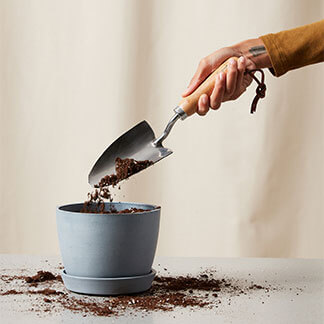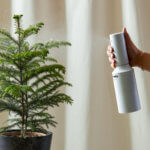Overwatering
The sago palm prefers to dry between waterings. Water when 75% of the soil volume is dry. Water thoroughly and discard any excess water in the saucer. Watering too often will quickly lead to yellowing leaves and eventual root rot.
Nutrient Deficiency
If you haven’t fertilized in quite some time, it could be just what your plant needs. The most common deficiencies in sago palms are nitrogen, magnesium, and potassium. This usually affects older leaves first and will start at the tips. Fertilize once in the spring and once in the summer with a general-purpose fertilizer. The yellow leaves won’t turn green again, but it should help the existing and new growth.
Pests
Like most plants, sago palms can attract pests like mealybugs, scale, and spider mites. Look out for cottony white tufts (mealybugs), hard bumps that can be picked off (scale), and webbing (spider mites). These sap-sucking insects will leave behind a sticky residue called honeydew which can attract sooty mold. Rinse the plant with warm water outside or in the shower to knock off the majority of pests. Use neem oil or insecticidal soap weekly until the infestation is clear. This might take several treatments to achieve. Always follow the directions on the bottle.
Natural Aging
As the sago palm matures it will shed its older bottom leaves to focus its energy on new growth. If you find the occasional older leaf yellowing, you can simply prune it off when it’s mostly yellow.










